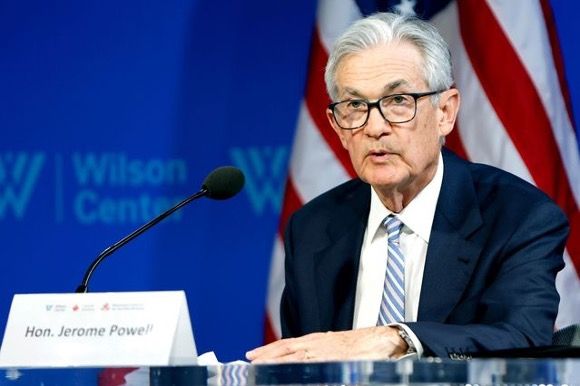S&P 500: +1.45% DOW: +1.27% NASDAQ: +1.38% 10-YR Yield: 3.80%
What Happened?
Stocks ended the week on a high note, driven by Federal Reserve Chair Jerome Powell’s speech at the Jackson Hole conference, where he hinted at potential interest rate cuts. This led to a rally across major indexes, with the S&P 500 gaining 1.45%, the Dow Jones climbing 1.3%, and the Nasdaq Composite advancing 1.4% for the week. Powell’s remarks, though lacking specific details on the timing or magnitude of the cuts, reassured investors that the Fed is leaning towards an easing cycle. This optimism boosted growth sectors, particularly technology stocks like Tesla and Nvidia, which surged over 4%. Small-cap stocks also saw significant gains, with the Russell 2000 rising more than 3% for the week.
The market’s performance was further supported by strong sector gains, especially in Real Estate (+3.6%) and Consumer Discretionary (+2.6%), which benefited from the potential for lower rates and positive earnings reports from retailers like Target and TJX Companies. Conversely, the Energy sector was the only one to post losses, down 0.9% for the week. Investors are now focused on upcoming economic data, including the August jobs report, which could influence the Fed’s decisions on future rate cuts. The anticipation of continued monetary easing has bolstered hopes for sustained economic growth and higher equity prices, although uncertainties about the Fed’s precise approach remain.
Nonfarm Payroll Growth Revised Down by 818,000
- As part of its preliminary annual benchmark revisions to the nonfarm payroll numbers, the Bureau of Labor Statistics said the actual job growth was nearly 30% less than the initially reported
- The revision to the total payrolls level of -0.5% is the largest since 2009.
The key takeaway – The U.S. economy created 818,000 fewer jobs from April 2023 to March 2024 than initially reported, according to the Labor Department’s preliminary annual revisions. This represents a nearly 30% reduction from the original figures and marks the largest downward revision since 2009. Sectors like professional services, leisure, and manufacturing saw significant downward revisions, while some areas, like education and health services, experienced upward revisions. These adjustments suggest that the labor market was weaker than previously understood, potentially signaling a slowdown in economic momentum.
Despite the sizable revisions, market reactions were relatively subdued, as many economists had already anticipated these downward adjustments, with expectations that the revisions could have been even more severe. The news was quickly overshadowed by the Federal Reserve’s announcement of a potential rate cut as early as September. The Fed’s decision on the magnitude of the rate cuts will likely be influenced by upcoming jobs data, underscoring the importance of future economic reports in shaping monetary policy.
Fed’s Powell Says “Time Has Come” To Cut Interest Rates
- Powell says timing, pace of rate cuts depends on data as Fed is expected to cut rates at September meeting
The key takeaway –
Federal Reserve Chair Jerome Powell, in his Jackson Hole speech, signaled that interest rate cuts are likely to begin soon, citing a cooling labor market and increased confidence that inflation is nearing the Fed’s 2% target. He stressed that while the job market is slowing, the Fed does not favor further weakening. Markets are now pricing in a 64% chance of a 25bps cut and a 37% chance of a 50bps cut, with the decisions hinging on August economic data. Stocks rebounded on the possibility of achieving a “soft landing,” where inflation is managed without causing a recession. The Fed’s future actions will closely follow upcoming job and inflation reports, making economic data pivotal in shaping monetary policy in the near term.
Existing Home Sales Break 4-Month Slide, Rising Slightly in July
- July’s existing home sales increased by 1.3%, breaking a four-month decline, with prices continuing to rise for the 13th consecutive month, indicating a potential stabilization in the housing market.
- The easing of mortgage rates to near 15-month lows is expected to improve affordability, possibly attracting more buyers and sellers, but the market remains cautious due to overall economic conditions
The key takeaway – The slight rise in July’s existing home sales and a modest increase in housing inventory suggest a potential stabilization in the housing market after a period of sluggishness. The easing of mortgage rates, now near 6%, could improve affordability and stimulate both buyer interest and seller activity. However, the market remains tentative, as high prices and economic uncertainty may limit significant growth. The broader market implication is that while there are positive signals, the housing sector’s recovery is fragile and closely tied to interest rate movements and broader economic conditions.

From Around the Watercooler
Peloton Shares Soar 35% As Turnaround Plan Takes Hold, Losses Shrink
Tech Billionaire Mike Lynch Identified Among Bodies Recovered From Italy Superyacht Catastrophe
RFK Jr. Endorses Trump And Suspends Presidential Campaign
Iconic ‘Backyard Sports‘ Franchise Making Triumphant Return





